|
|
|
Len Plog and the Real
Yak Killer
![]()
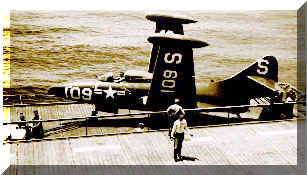
When Lieutenant (jg) Leonard H. Plog became the first Navy jet pilot to down an enemy plane, he made history. His aircraft, however, became a target of mistaken identity. Seldom has a particular aircraft been so consistently misrepresented in aviation literature as the F9F-3 Panther of Fighter Squadron (VF) 51 flown by Plog when he downed a Yak-9 on 3 July 1950. Books and magazine articles have portrayed various F9F-2s from VF-51’s second Korean deployment on board Essex (CV 9) as the Navy’s first jet victor in aerial combat. It happens that the squadron insignia, which includes a star superimposed on a circle, can be easily mistaken for a North Korean kill marking. In the black-and-white photos of the period, every model of Panther in VF-51 might therefore appear to be Plog’s. But according to his logbook, Plog flew F9F-3 BuNo 123071 that day, and the photo of his aircraft - taken on either 18 or 19 July - confirms his recollection that no kill marking was applied. Thus ends the mystery of the "real Yak killer."
Now, about the pilot . . . Len Plog entered the Navy as an Aviation Cadet
in November 1942 and graduated from the training command at Corpus Christi,
Texas, in June 1944. After carrier qualification 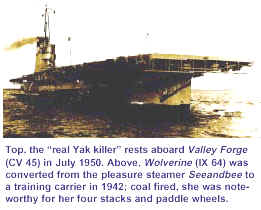 aboard the training carrier Wolverine
(IX 64) in the SB2C-4E Helldiver, he was assigned to an escort carrier with
other replacement pilots and aircraft. Plog went on to Air Group 83 on
board Essex (CV 9),
serving with Bombing Squadron (VB) 83 until the end of the war.
aboard the training carrier Wolverine
(IX 64) in the SB2C-4E Helldiver, he was assigned to an escort carrier with
other replacement pilots and aircraft. Plog went on to Air Group 83 on
board Essex (CV 9),
serving with Bombing Squadron (VB) 83 until the end of the war.
During WW II, antiaircraft artillery (AA) was the squadron’s biggest threat, claiming the lives of 13 aircrewmen and downing nine VB-83 Helldivers. The worst flak Plog remembers was during an 18 July strike against the battleship Nagato at Yokosuka, Japan, which cost the squadron a pilot and gunner. The captured pilot, Ensign Ernest Baker, had come to VB-83 with Plog from the replacement pilot pool. Plog vividly remembers loading the bomb bays with cigarettes, candy and food, and dropping them into prisoner-of-war camps the morning after the war ended.
34 Naval Aviation NewsMay–June 1997
A man of few words, Len described the Helldiver as a "pretty
interesting airplane" to fly, with lots of good points and lots of bad
ones. One problem was that the SB2C was a c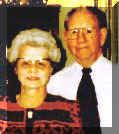 ompletely
hydraulic airplane, but
without color-coded controls for all the functions, such as flaps and dive
flaps, which led to many mistakes in switchology. VB-83’s CO was blunt
in his June 1945 recommendations and comments based on the first two and one
half months of combat experience. He noted, "In spite of the SB2C, heavy
losses and frequent kamikaze attacks on
ompletely
hydraulic airplane, but
without color-coded controls for all the functions, such as flaps and dive
flaps, which led to many mistakes in switchology. VB-83’s CO was blunt
in his June 1945 recommendations and comments based on the first two and one
half months of combat experience. He noted, "In spite of the SB2C, heavy
losses and frequent kamikaze attacks on
After finishing college, he was off to NAS North Island, San Diego, Calif., to ferry TBM-3 Avengers, F4U-4
Corsairs and SNJ-5 Texans. In the fall of 1948, he was assigned to the Navy’s first jet transition class, conducted by Fighter Squadron (VF) 52 in Lockheed TO-1s. Plog was then ordered to VF-51 at North Island where he got about 10 hours in the FJ-1 Fury before transitioning to the F9F-3 Panther. Plog describes the FJ-1 as a "fine air-plane" which was simpler to fly than the TO-1. Although the Fury’s J-35 engine put out about the same amount of thrust as the TO-1’s J-33, he remembers the FJ-1 as a much more nimble aircraft. On 23 July 1949, Plog and another VF-51 pilot went to the Grumman plant in Bethpage, N.Y., picked up two brand-new F9F-3s and flew them back to North Island. VF-51, a mix of WW II veterans and new pilots, left San Diego in May 1950 as part of Air Group 5 for a western Pacific cruise on board Valley Forge (CV 45). When the Communists invaded South Korea on 25 June, she was the only U.S. carrier in the area, a day out of Hong Kong and headed for the Philippines. Valley Forge arrived in the Yellow Sea as Task Force 77’s flagship, and the first strikes were launched on 3 July in conjunction with aircraft from the British carrier HMS Triumph. Plog and 11 other VF-51 pilots were strafing an airfield near Pyongyang when a Yak-9 took off; Lt. (jg) Plog blew off its wing with a short burst, scoring the Navy’s first aerial victory in Korea. Ens. Eugene W. Brown, also of VF-51, downed another Yak a few minutes later. After this first mission, VF-51 concentrated on road and rail interdiction. Len remembers that in Korea, in contrast to WWII, small arms fire was a bigger problem than AA. The North Koreans had a hard time adjusting to jet speeds, and he routinely saw the AA bursting any-where from 50 to 500 yards behind. The F9F-3’s Allison J-33 engine produced substantially less thrust than the F9F-2’s Pratt and Whitney J-42, and the lower thrust imposed real limits on its capabilities. It could not carry any under-wing ordnance and was therefore limited to air-to-air and strafing missions. Takeoff in a fully loaded F9F-3 required 30-knot winds over the deck, which in turn required Valley Forge to steam at speeds that were less than efficient for fuel consumption. Eventually, all surviving -3s were given the J-42 and redesignated -2s.After Korea, Plog was assigned to the general line school at Monterey, Calif. Of the 461 officers in his class, 343 were aviators so there was much demand for proficiency flight time at Monterey. There were a few F6F Hellcats, but they were hard to schedule and most of his flying was done in the SNB Kansan until his graduation in December 1951. Len was later assigned to a weapons project at Naval Air Special Weapons Facility, Albuquerque, N.M., where the flying was done in AD-4 Skyraiders and F2H-2 Banshees. He checked out in two other aircraft while there - the R4D Skytrain and F7F-3 Tigercat, which were used for supply flights.
His next assignment was with Utility Squadron (VU) 3’s Regulus Assault
Missile Detachment 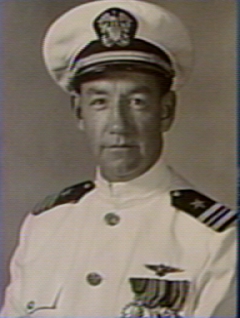 (RAM Det) at Brown Field, a naval auxliary landing field in
California. Len flew a variety of aircraft there, including TV-2Ds, F2H-2Ps,
F9F-2KDs, SNB-5s and F9F-6Ds. In September 1955, VU-3’s RAM Det and Guided
Missile Unit 52 were combined to form Guided Missile Group 1 (GMGRU-1) and moved
to North Island. When GMGRU Det, Point Mugu, Calif., was established in June
1956, Len was the first officer in charge.
(RAM Det) at Brown Field, a naval auxliary landing field in
California. Len flew a variety of aircraft there, including TV-2Ds, F2H-2Ps,
F9F-2KDs, SNB-5s and F9F-6Ds. In September 1955, VU-3’s RAM Det and Guided
Missile Unit 52 were combined to form Guided Missile Group 1 (GMGRU-1) and moved
to North Island. When GMGRU Det, Point Mugu, Calif., was established in June
1956, Len was the first officer in charge.
In June 1957 he went toWashington, D.C., for a three-year assignment in the Missile Division of the Bureau of Aeronautics. Among other projects, he worked with the Air Force on a targeting system for the Sidewinder heat-seeking missile. From there he went to VU-1 at Barbers Point, Hawaii, where he flew the FJ-3. In addition to the usual fleet utility service duties, VU-1 had assumed responsbility for the Regulus program when GMGRU-1 was decommissioned, and continued to support the program until the missile was phased out.
Len Plog may be best known as the first Navy jet pilot to down an enemy
aircraft, but he also compiled an outstanding record as a dive-bomber pilot in
WW II and after Korea did 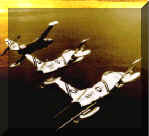 pioneering work in nuclear weapons delivery
techniques and surface-to-surface missile operations. Flying a variety of
aircraft during his naval career, Plog noted that although he and the Panther
made Naval Aviation history, his favorite plane was the Fury, which he called
"a real forgiving, honest aircraft."
pioneering work in nuclear weapons delivery
techniques and surface-to-surface missile operations. Flying a variety of
aircraft during his naval career, Plog noted that although he and the Panther
made Naval Aviation history, his favorite plane was the Fury, which he called
"a real forgiving, honest aircraft."
After retiring from the Navy as a lieutenant commander in 1963, Plog kept his hand in aviation, working for the Texas-based Vought company for six years. Now completely retired, he spends time in his wood-working shop; rooting for the Dallas Cowboys, the Texas Rangers and his grandaughter’s volleyball team; fishing with his grandson; and in activities with the Fort Worth Quiet Birdmen.
Of course, when reminiscing about his Navy days, he continues to set the record straight on the "real Yak killer."
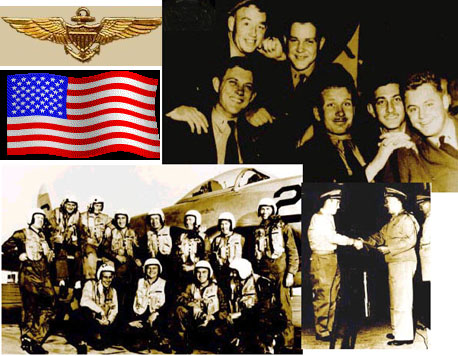
Plog (upper left) and other replacement pilots in San Diego before departing for Hawaii, 1945; the Navy’s first jet transition class, October 1949 (Plog is standing, second from right)
Plog receives an Air Medal for the 3 July 1950 Yak shootdown from RAdm. John Hoskins, Commander Carrier Division 3..By Jim Burridge
Mr. Burridge is a career civilian intelligence officer currently assigned to the National Intelligence Council, and a Naval Aviation enthusiast. This article evolved from his correspondence with Len Plog regarding the markings of the Panther he flew on the day of his historic victory.
36 Naval Aviation NewsMay–June 1997
PHCS (AC) R. L. Lawson
|
GMGRU-1 ConUS Detachment GMGRU-I Continental United States Detachment with LCDR Len Plog as the first OinC, was established at Point Mugu in June 1956. LT M.E. Smith was transferred to ConUS Det from NAMTC’s missile test division; this experienced pilot performed the Regulus recoveries during the detachment’s first year of operations. The original detachment also included LT Rufo Robinson, LTJGs Bo Gresenti, Don Reiman, Pete Sherman, Ken Chamberlain, Bill Boyer along with ENSs John Cormell and Ernie Mares. As the short-time phased out, new pilots from the training command were ordered as replacements. A few key people from the parent group soon rotate back to ConUS. Replacements included LCDRs John Callahan, V Forsberg, LTs Bernie Welch, George Gregory, Dave Newbro, as well as LTJGs Al Thayer and Todd Vieregg. This permanent detachment’s assignment was to provide aircraft support for fleet submarine and cruiser training on the West Coast The detachment operated seven or more aircraft; two TVs, two F9Fs and three FJs. Unlike the parent group, ConUS Det did not have autonomous missile launch capability and relied on GMU-55 for missile preparation and launch services. Aside from maintaining token capability for Regulus tact delivery, the detachment concentrated primarily on R&D and support of missions from the customer’s perspective. In addition to conducting Regulus KDU-l (target drone) operations for Norton Sounds Terrier and VX-4’s Sparrow III evaluations, the det chased recovered missiles launched from fleet submarines and cruisers. Detachment’s F9F-2KDs were in constant demand for the cruiser community’s insatiable appetite for drone missions. Although ConUS Det was a fleet tenant at Point Mugu, its competence was frequently used to augment the center’s R&D capability In addition to Regulus operations, the Det chased air-launched KDA-1 (early Ryan Firebee target) tests and the detachment’s TV-2Ds frequently provided platforms for photo coverage of many missile operations. The Hook Spring 1992 |